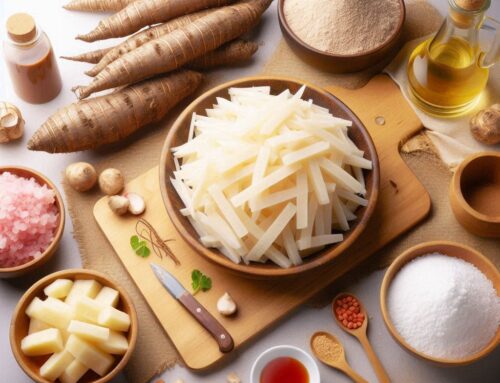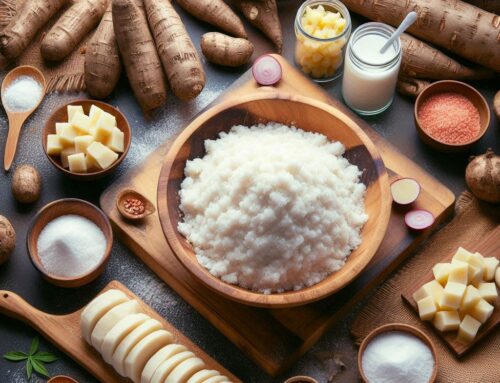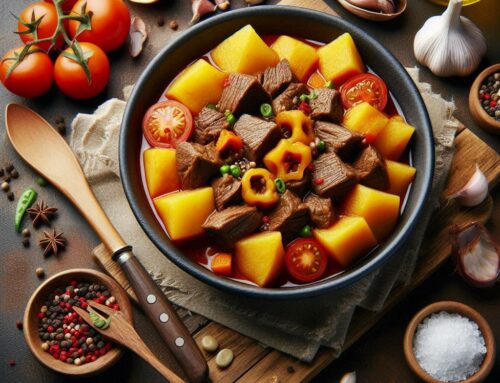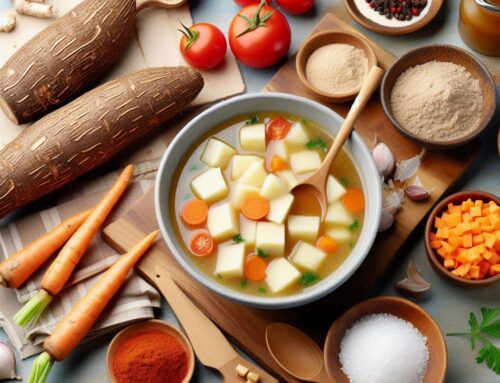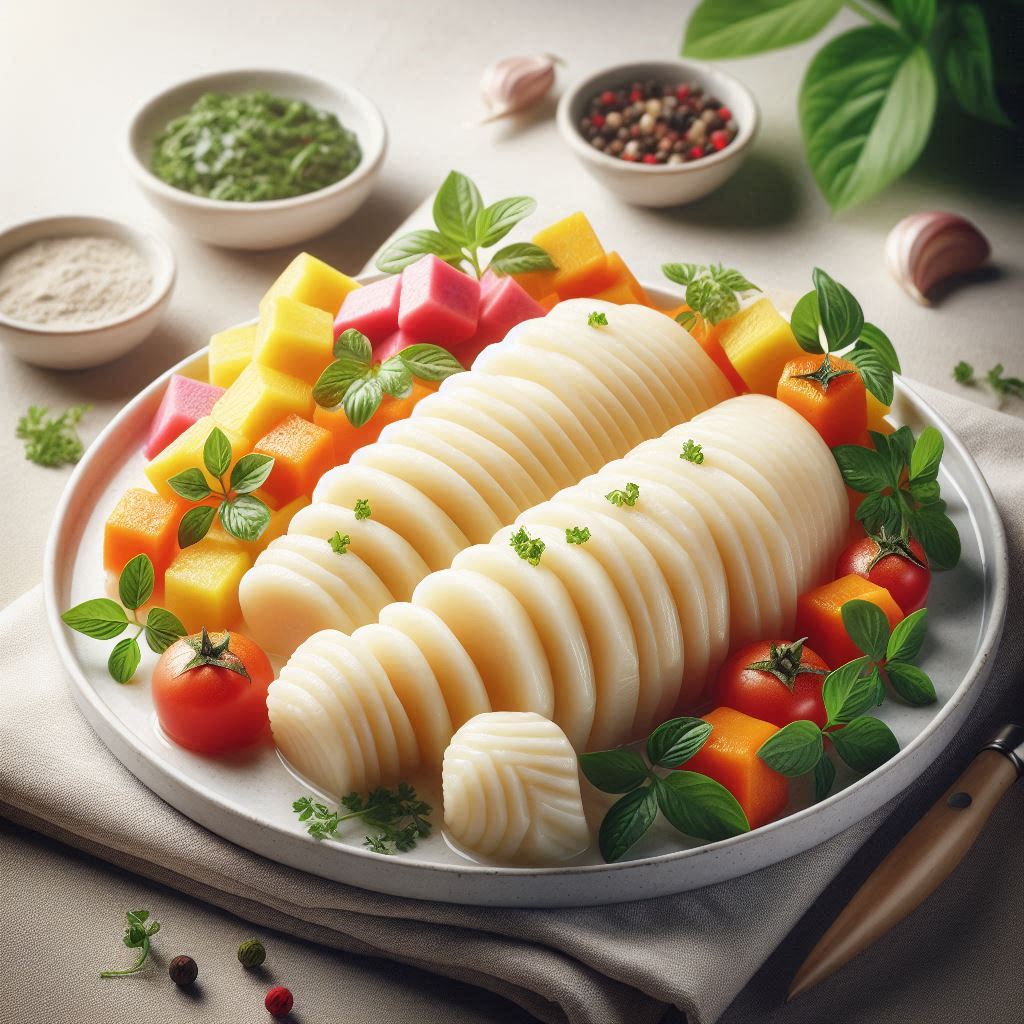
Introduction: Why Perfectly Boiled Cassava Matters
Cassava, a starchy root vegetable, is a staple food in many parts of the world, valued for its versatility and nutritional benefits. However, perfectly boiling cassava is crucial to unlocking its full potential. Properly cooked cassava not only enhances its flavor and texture but also ensures safety and maximizes its health benefits.
One of the primary reasons to focus on perfecting your boiled cassava technique lies in the root’s natural composition. Cassava contains cyanogenic glycosides, compounds that can release cyanide if not cooked properly. By boiling cassava thoroughly, these harmful compounds are broken down and rendered harmless, making it safe for consumption.
Beyond safety concerns, perfectly boiled cassava offers numerous dietary advantages. It is an excellent source of carbohydrates and provides energy while being low in fat. Additionally, it contains essential vitamins and minerals such as vitamin C, folate, and magnesium. When cooked correctly, cassava becomes tender with a subtly sweet flavor that pairs well with various dishes.
To achieve optimal results when boiling cassava, there are several cooking tips to consider. Start by selecting fresh roots that are firm to the touch with no soft spots or blemishes. Peel the thick skin carefully before cutting the root into uniform pieces to ensure even cooking. Boil in salted water until fork-tender—this usually takes about 20-30 minutes depending on size—and drain thoroughly before serving.
Understanding these basics of a good cassava recipe not only helps you enjoy this nutrient-rich food safely but also allows you to incorporate it creatively into your meals as a delicious side dish or ingredient in more complex recipes. Whether you’re new to cooking with this versatile root or looking to refine your technique further, mastering the art of perfectly boiled cassava opens up a world of culinary possibilities while ensuring you reap all its nutritional benefits safely.
Understanding the Right Texture: What to Look For
When it comes to preparing cassava, achieving the right texture is key to enjoying this versatile root vegetable. Understanding the nuances of cassava texture can greatly enhance your culinary creations, whether you’re making a traditional dish or experimenting with new recipes.
To begin with, a reliable cassava texture guide can help you achieve the perfect consistency. The ideal boiled cassava should be soft yet firm enough to hold its shape without crumbling. This balance ensures that the cassava is tender enough to enjoy but not overcooked to a mushy state.
Checking the firmness of cassava is an essential step in determining its readiness. A simple fork test can be quite effective: insert a fork into the center of a piece of boiled cassava—if it slides in easily but meets slight resistance, you’ve achieved the perfect consistency. If it’s too hard, it needs more cooking; if it’s too soft, it may have been overcooked.
Remember that different dishes might call for varying levels of softness depending on how you plan to use your boiled cassava. For example, if you’re mashing it or using it in soups and stews, slightly softer textures may be preferable. By understanding these subtle differences and following this guide on how soft boiled cassava should be, you’ll ensure that your dish turns out just right every time.
The Importance of Timing: How Long Should You Boil Cassava?
When it comes to preparing cassava, timing is everything. Understanding the appropriate cassava boiling time is crucial to achieving the perfect texture and flavor. Typically, the cooking duration for cassava ranges from 15 to 30 minutes, depending on the size of the pieces and their freshness. To ensure that your cassava is cooked just right, start by peeling and cutting it into uniform chunks. This allows for even cooking throughout.
One of the key timing tips for boiling cassava is to begin testing its doneness after about 15 minutes of boiling. Use a fork or knife to pierce a piece; if it slides in easily without resistance, your cassava is ready. It’s important to avoid overcooking cassava as this can lead to a mushy texture that detracts from its natural taste and makes it less enjoyable. By keeping an eye on your pot and testing periodically, you can master the art of boiling cassava perfectly every time.
Testing with a Fork: The Fork Tender Method Explained
When it comes to cooking vegetables, achieving the perfect texture is essential. One of the simplest and most effective methods for testing doneness is the fork test, a technique that has been relied upon by home cooks and professional chefs alike. This method involves using a fork to gauge whether boiled vegetables have reached the desired level of tenderness.
To perform the fork test for boiled vegetables, gently insert a fork into the thickest part of the vegetable. If it slides in with little resistance and easily breaks apart, your vegetable is likely done. For instance, when boiling cassavas—a starchy root vegetable known for its dense texture—it’s crucial to ensure they are thoroughly cooked before serving. To check if cassavas are done boiling using this method, insert a fork into several pieces; if they feel tender throughout and can be pierced without force, they are ready.
The beauty of testing doneness with a fork lies in its simplicity and versatility. It can be applied to a wide range of vegetables beyond cassavas, such as potatoes or carrots. This straightforward approach not only helps achieve optimal texture but also prevents overcooking, ensuring that your dishes retain their flavor and nutritional value. Whether you’re preparing a comforting stew or crafting an elegant side dish, mastering the fork tender method will elevate your culinary skills and enhance your dining experience.
The Role of Color and Smell in Determining Doneness
When it comes to cooking root vegetables like tubers and cassavas, understanding the role of color and smell can be crucial in determining doneness. Visual cues are particularly helpful when working with cooked tubers. For instance, potatoes typically change from a firm, opaque appearance to a softer, more translucent one as they cook. This shift in texture and color is a clear indicator that they are ready to be served.
Similarly, the smell plays an essential role in identifying when root vegetables have reached their ideal state. As cassavas boil, they release a distinct earthy aroma that intensifies as they approach doneness. This olfactory cue can guide you in deciding when to remove them from heat.
For boiled cassavas specifically, the right color indicates readiness when their flesh transforms into a creamy white hue while maintaining structural integrity without being overly mushy. By paying attention to these visual and aromatic signals, you can ensure your root vegetables are perfectly cooked every time.
Taste Test: The Final Confirmation Your Cassavas are Ready to Serve
When it comes to preparing cassavas, the taste test is the ultimate confirmation that these versatile tubers are ready to be served. The process of savoring cooked tubers involves a methodical approach to ensure that their unique flavor profile is just right. This palate testing in cooking roots like yuca or cassavas not only verifies doneness but also enhances the overall culinary experience.
To begin with, it’s important to understand the flavor profile of cooked yuca. When perfectly prepared, cassavas should have a mildly sweet and nutty taste with a creamy texture that complements various dishes. To conduct an effective taste test method, start by cutting a small piece from the center of the tuber after boiling or steaming it. This section should be tender yet firm enough to hold its shape.
As you sample the piece, pay attention to both texture and flavor. The tuber should not be too hard or grainy; instead, it should melt smoothly on your palate without any fibrous strands lingering between bites. If you detect any bitterness, this may indicate undercooking or improper preparation methods.
By mastering this simple yet crucial step in savoring cooked tubers through taste testing, you can confidently serve deliciously tender and flavorful cassavas every time. Whether they are used as a side dish or incorporated into more complex recipes, ensuring your yuca is perfectly prepared will elevate your culinary creations and delight those who enjoy them.
Conclusion: Mastering the Art of Cooking Cassavas Perfectly Every Time
Mastering the art of cooking cassavas perfectly every time requires a blend of knowledge, technique, and practice. Cassava, a staple in many cuisines around the world, offers a versatile base for numerous dishes. To achieve perfect results, it’s important to start with fresh cassavas that are firm and free from blemishes. Proper preparation begins with peeling the tough outer skin and cutting the tuber into manageable pieces.
Boiling is one of the most common methods for cooking cassava. Ensure that you cook it thoroughly to eliminate any naturally occurring toxins present in raw cassava. A good rule of thumb is to boil until fork-tender—usually between 15 to 20 minutes—then drain well. For those looking to experiment beyond boiling, frying or baking can add an exciting twist in texture and flavor.
Seasoning plays a crucial role in enhancing the subtle taste of cassava. Whether you’re adding simple salt and butter or infusing more complex spices and herbs, each approach can transform this humble root into a delightful dish.
With these techniques at your fingertips, you can confidently prepare cassavas that are not only safe but also deliciously satisfying every time.



